Caño Island is a place where the largest rays can be spotted annually in some months of the year. We are talking about the majestic manta rays, they are fascinating creatures that navigate the seas with a unique grace and elegance.
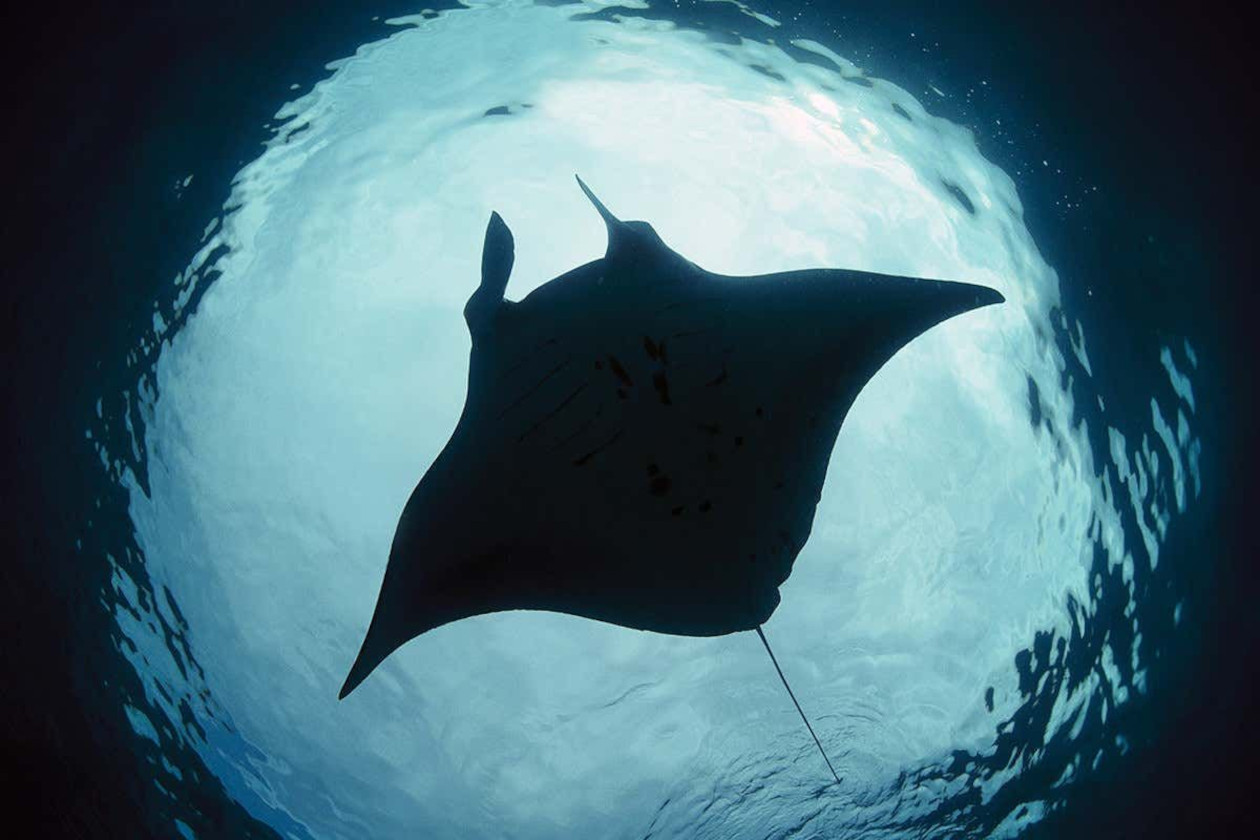
If you’ve already been lucky enough to meet one in person, you’ll totally agree with this. These creatures are close cousins of the devil rays, rays that can also be seen in the waters around Caño Island.
In this marine paradise, at a diving spot called “the devil’s bass,” is where we have the privilege of spotting the impressive oceanic manta (Mobula birostris), an encounter that few are lucky enough to experience.
With their imposing dimensions that can reach up to 8 meters in wingspan and a weight of approximately 1,400 kilograms, these creatures are true giants of the ocean.
In this 3 minutes video from New Atlantis WILD channel, you will learn a little bit more about this beautiful animal. In Costa Rica, if you are lucky, it is possible to see them at Caño Island, specially in “Bajo del diablo” diving place.
The manta ray is still a mistery. We know very little about them. The fact that they can’t live in an aquarium makes their study really difficult.
Did you like this video? Like us and dive into the amazing underwater world with Costa Rica Dive and Surf.
What do manta ray eat?
A very interesting incongruity that occurs in the ocean is that some of the largest species of animals, such as manta rays, whale sharks, and many whales, feed on plankton, the tiniest being in the seas.
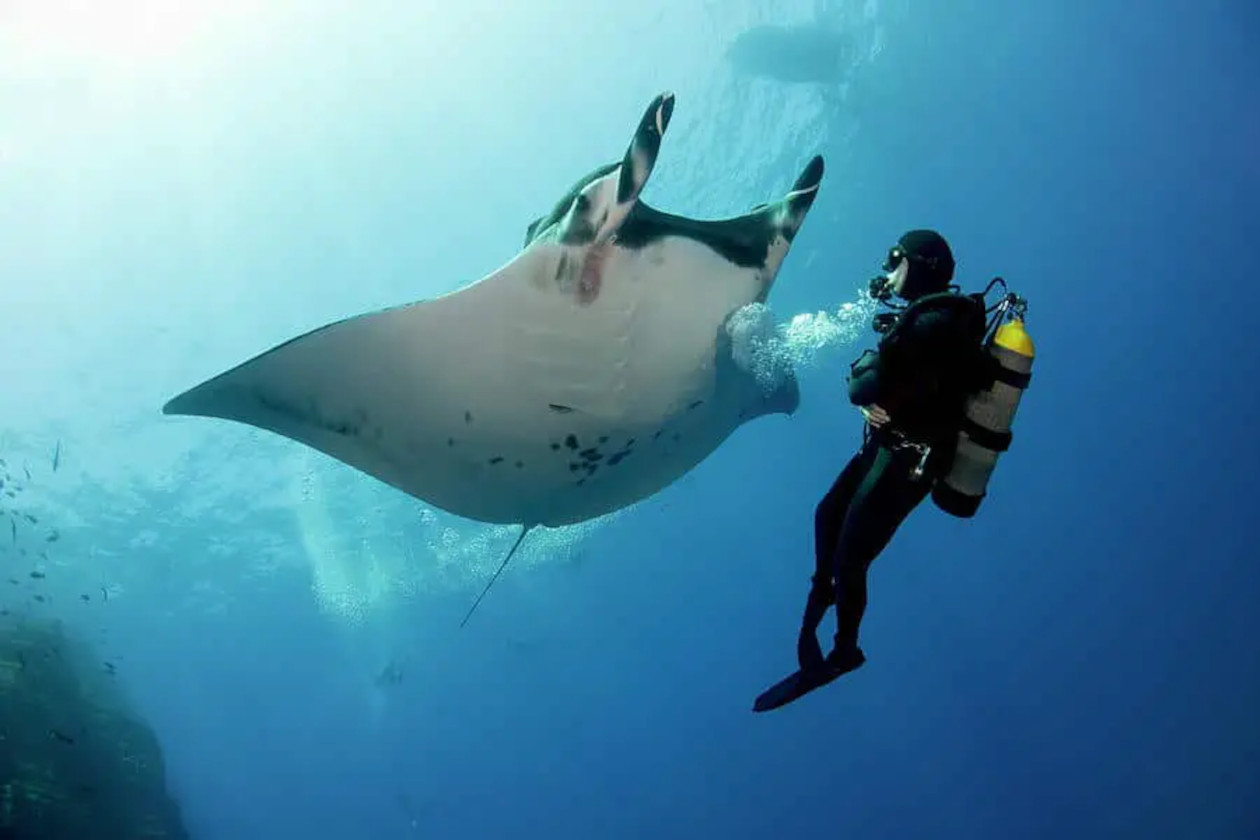
Like sharks, manta rays can have remoras attached to their undersides, which in turn feed on leftovers.
Remoras are fish that attach themselves to other fish larger than themselves, and feed on the remains of the food of larger fish.
How big can manta rays be?
We realize just by looking at them that manta rays are huge animals.
They can measure up to 8 meters in length, and generally weigh around 1,360 kilos.
Why do we know so little about manta ray?
One of the reasons why we know so little about them is because they have been studied so little. Recently its gender was modified after genetic studies carried out. In fact, a new species of the genus Móbula is currently being described, which lives in the Caribbean.
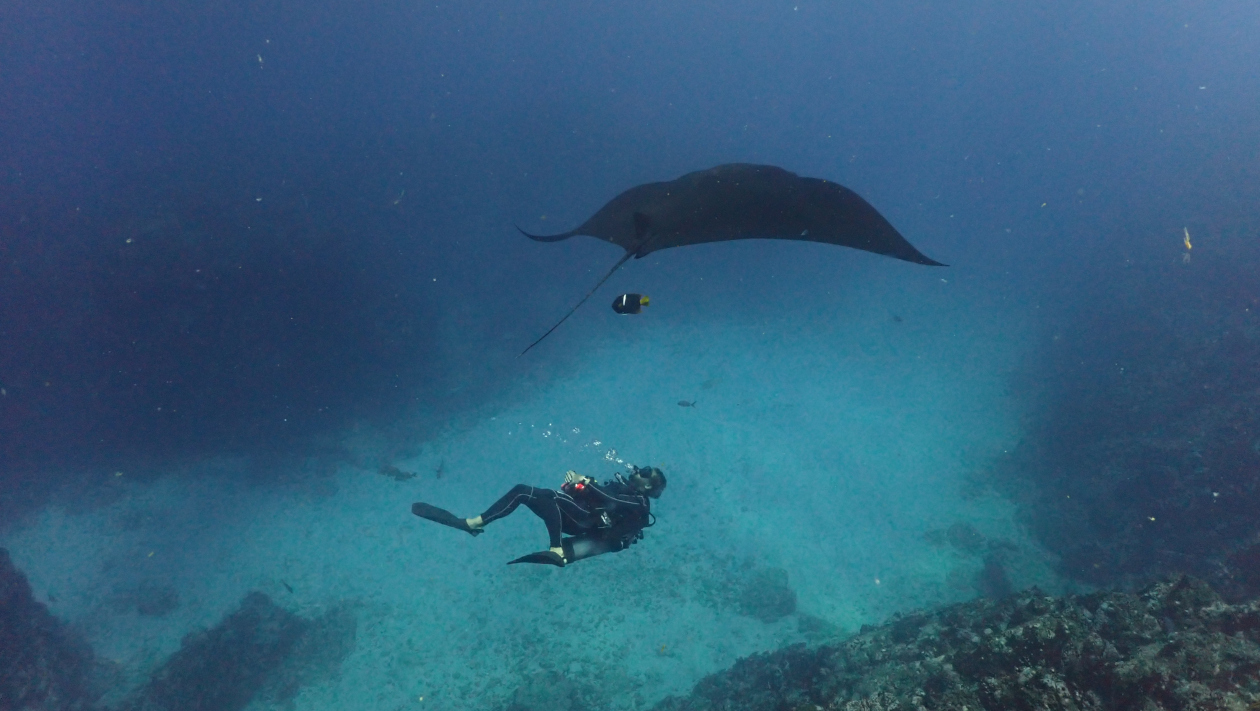
Furthermore, they are animals that are not always sighted, there are seasons in which they can normally be observed on islands or islets often far from the coast, which makes their research more complicated on a logistical and economic level. However, there are more and more studies trying to understand its biology and ecology.
These studies not only allow us to learn more about the species, but also protect it and understand possible regulations that may be made for its protection and care in its habitat.
Are manta rays in danger of extinction?
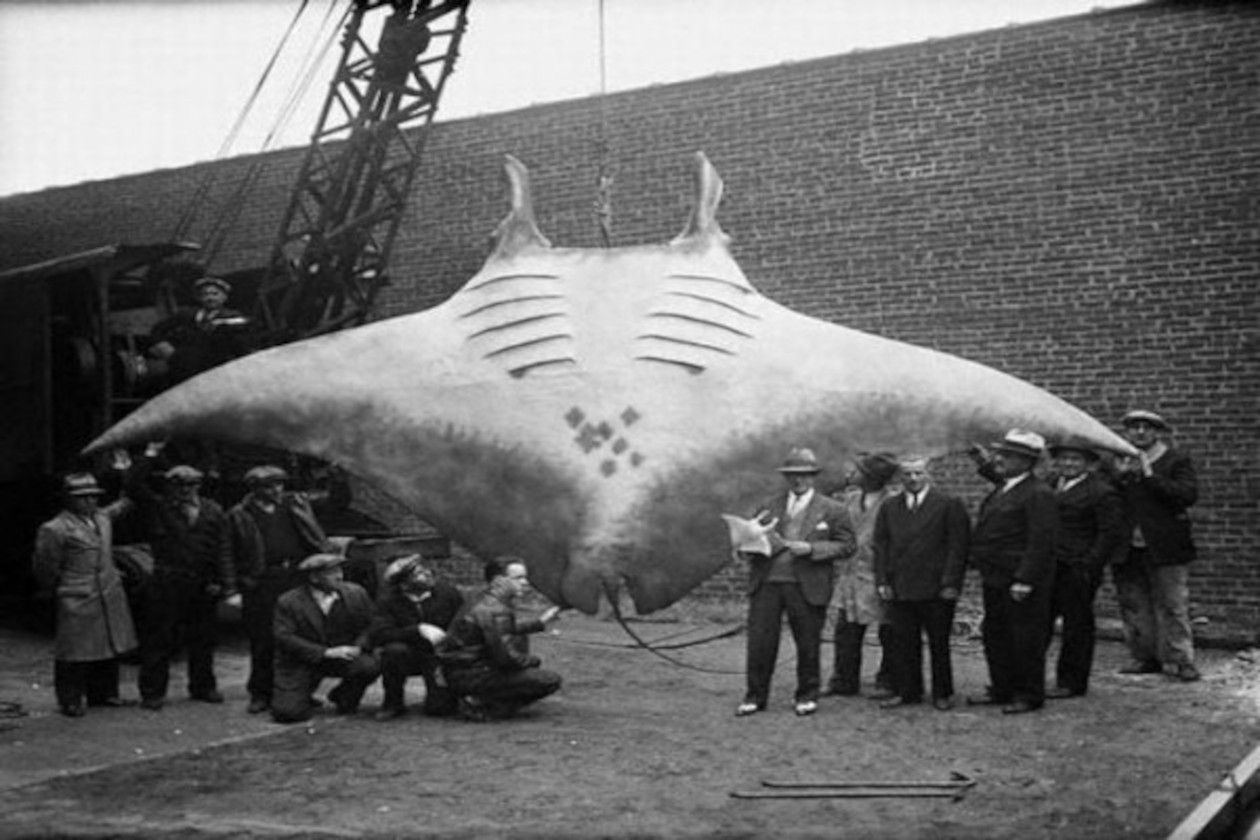
A stark reminder of the past: people posing with a giant manta. Let’s ensure history does not repeat itself: protect and preserve our marine giants
We cannot be sure whether or not they are in danger of extinction because we do not know their population.
We do know that they are classified as a threatened species, and one of the reasons is due to harpoon fishing.
The International Union for Conservation of Nature (IUCN) lists both manta ray species, the reef manta ray (Mobula alfredi) and the giant manta ray (Mobula birostris), as vulnerable to extinction.
According to studies, it is estimated that their populations have decreased by 70% in the last 30 years.
Do these elasmobranchs have a skeleton?
These species are cartilaginous fish, that is, they do not have a skeleton of bone but of cartilage like all sharks and other rays (and also like your nose), like the rest of the vertebrates, which is what allows them to make those magnificent acrobatic movements.
Who are the predators of the manta rays?
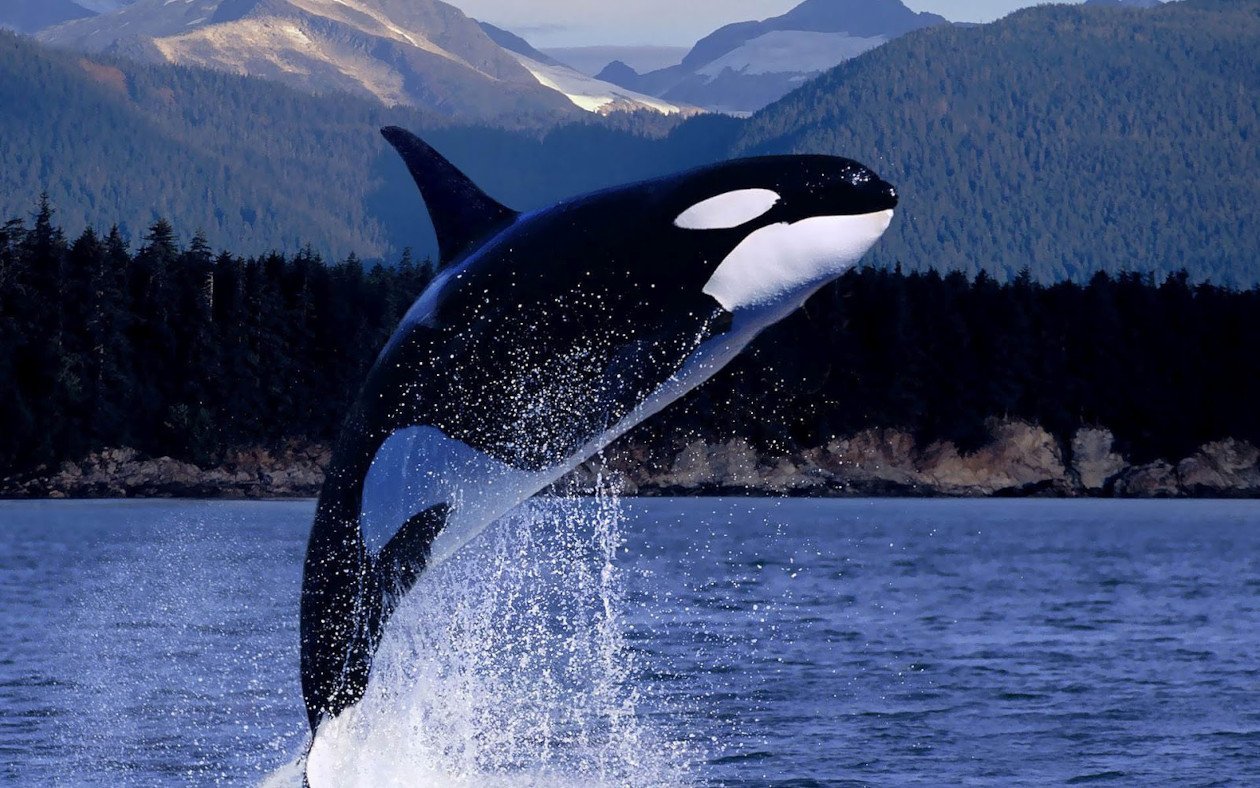
Intricate Dance of Predation as the Mighty Killer Whale Emerges as the Unrivaled Adversary of Manta Rays in the Aquatic Realm.
The predators of the manta rays are the killer whales, and although it seems hard to believe, so are the sharks.
Sharks are the closest relatives of manta rays in the marine world.
The jump of the manta ray
Like other mobulas, manta rays usually perform acrobatic jumps in the water.
Not even scientists can tell us the real reason why they do this. Although there are hypotheses that they do it for reasons of communication, play, escape from predators or to free themselves from parasites.
It is also hypothesized that manakins are mostly males and that this form of communication can be used for reproduction purposes.
Migration Patterns of Manta Rays
Manta rays are known for their complex and fascinating migratory patterns, which are vital to their survival. These marine creatures often travel long distances in search of warmer waters rich in food, influenced by factors like water temperature and prey availability.
Recent studies using satellite tracking have revealed that some manta ray species migrate thousands of kilometers between feeding and breeding sites.
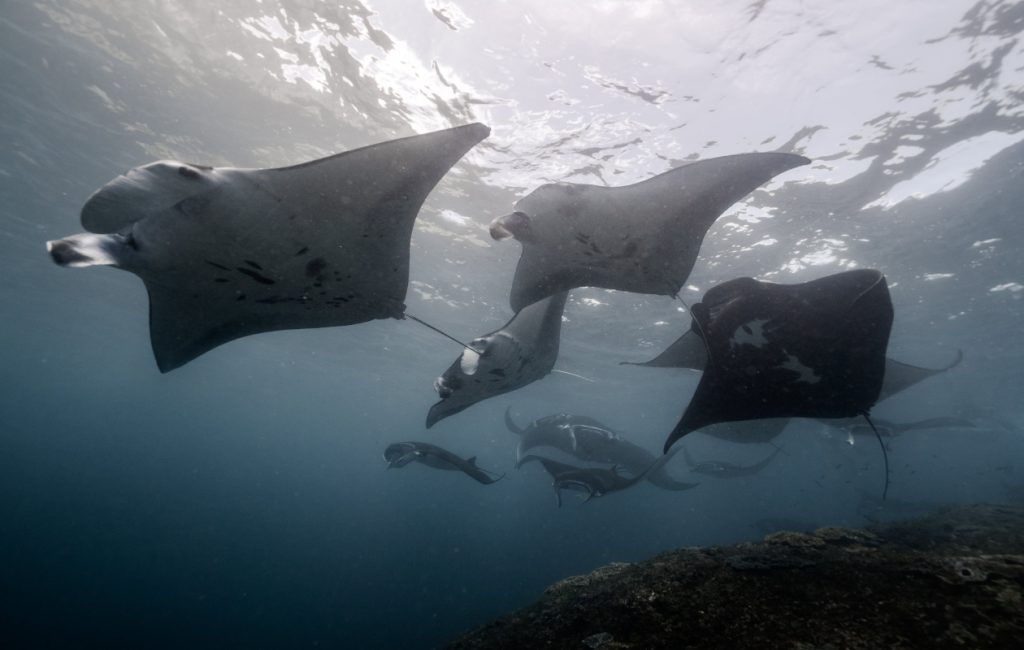
This behavior is not only essential for their nutrition but also contributes to the health of marine ecosystems.
However, their migratory routes face significant threats, including overfishing, pollution, and climate change, putting their habitats at risk.
Protecting these areas is crucial to ensuring that manta rays continue their journey across the oceans. A better understanding of their migration patterns will help us implement effective conservation and protection strategies.
Differences between mantas and stripes
Mobulae and rays are cartilaginous fish that belong to the order Batoids, meaning they are close relatives. Within the mobulas, there are 11 known species, including 2 species of manta rays and 9 species of devil rays.
These species share several similar characteristics: they are primarily plantivorous, meaning they feed primarily on plankton; they have the inability to stop completely in their swimming, which forces them to keep in constant motion or be against the current when they are static (for example at the cleaning stations at our “bajo del diablo” dive spot).
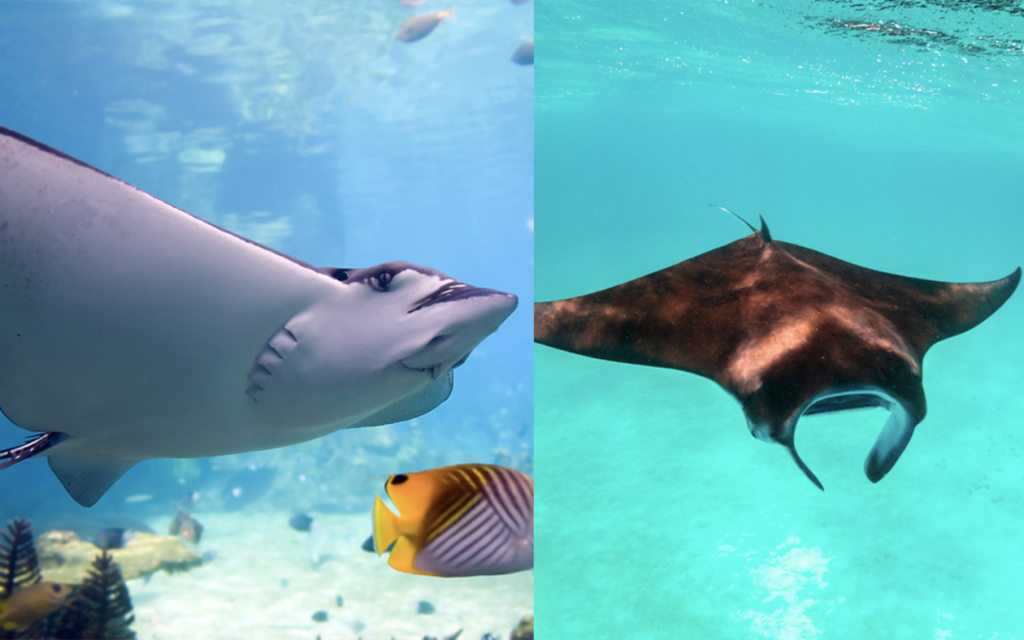
They are generally considerably larger in size compared to other cartilaginous fish; and they have cephalic lobes, which are extensions of the pectoral fins that are used to direct the flow of water toward the mouth while feeding.
On the other hand, rays form a diverse and large group of species, including a variety of shapes and sizes. Some of the best-known species are the butterfly ray, which is characterized by its colorful patterns and flattened, butterfly-like shape.
Oceanic mantas
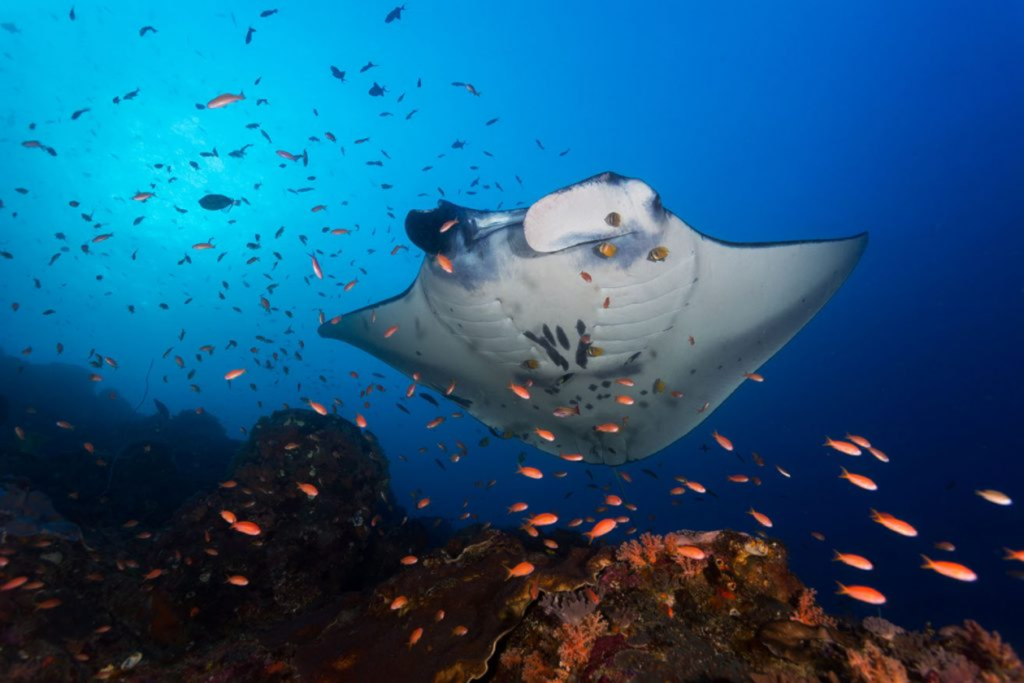
- Differentiated body fins
- Mouth located in the front
- They measure up to 8 meters
- Manta ray are planktivorous
- They swim near the surface
- This animal do not have a poisonous stinger
Can a manta hurt us?
Despite common confusion, stingrays are not poisonous. They are often confused with whip rays, which do have poisonous spikes on their tails. Mantas are peaceful creatures that feed on plankton and pose no threat to humans.
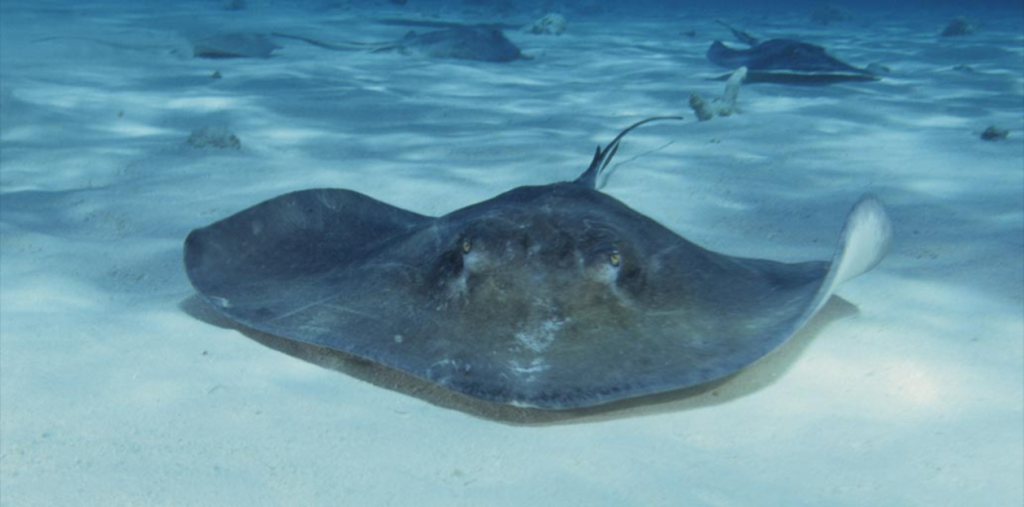
They are prized for their grace in the water and are a popular diving and ecotourism attraction in many coastal destinations.
Manta conservation initiatives
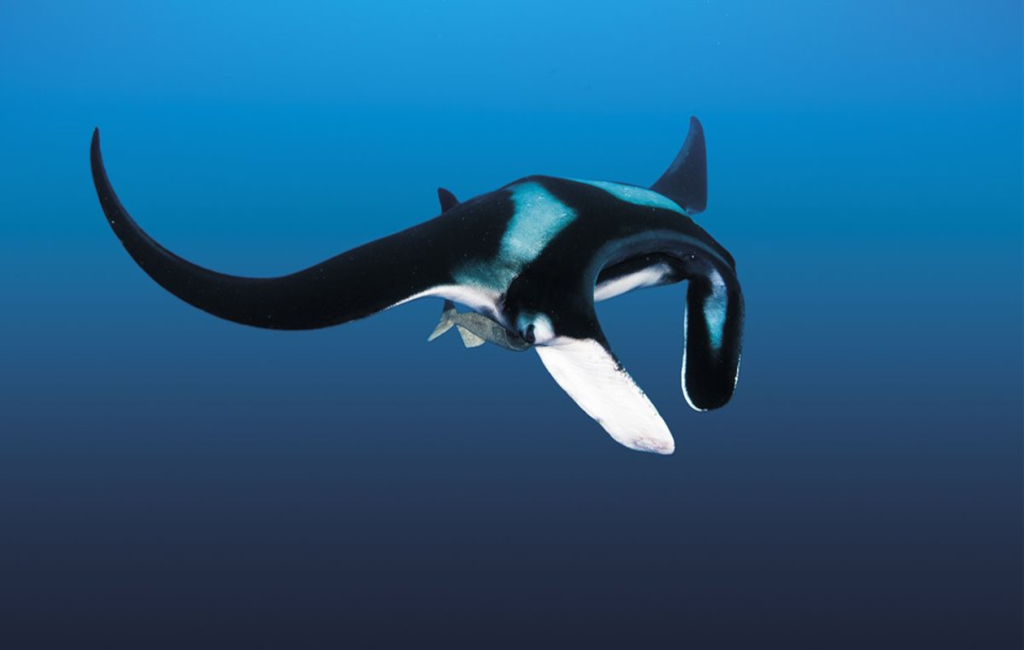
Efforts are being made to protect and conserve manta rays, which, according to the IUCN, are in danger of extinction. Conservation organizations, such as Mantas Costa Rica in our country, advocate for stricter regulations in favor of these giants of our oceans.
These initiatives are crucial to ensure the survival of the species and protect marine biodiversity through satellite and acoustic tagging, DNA sampling and camera trap studies.
This organization is carrying out these investigations to better understand their migration patterns, populations and behaviors.
International Protection of the Giant Manta Ray
In recognition of the vulnerability of the giant manta ray (Manta birostris), the United Nations has taken steps to protect it.
In 2014, the Convention on International Trade in Endangered Species (CITES) included it in its Appendix II, which allows its trade to be regulated and its uncontrolled exploitation prevented.
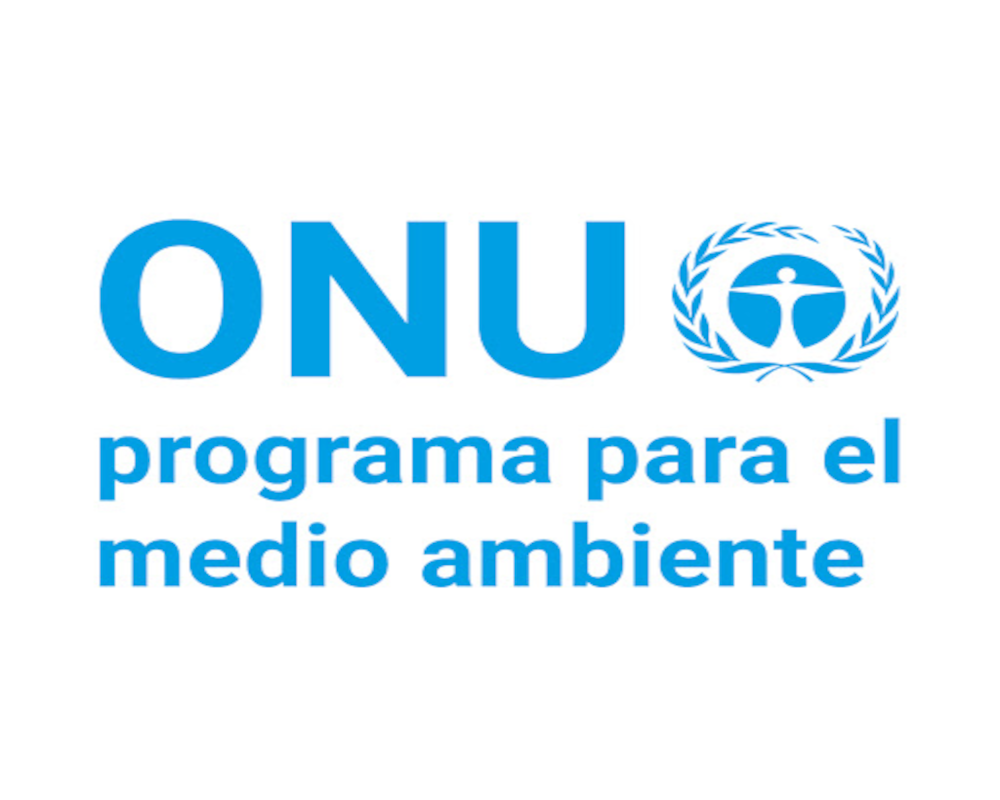
More recently, in 2021, it was proposed to increase its level of protection within the SPAW Protocol, which would strengthen conservation efforts in the Wider Caribbean. These initiatives seek to guarantee their survival and preserve the balance of marine ecosystems.
Cleaning stations
Cleaning stations are vital places for manta rays and many marine species, where they come to receive an essential service: the cleaning of parasites and dead skin by cleaner fish.
These stations, often located on coral reefs, rocky reefs or other underwater formations, provide a safe environment where manta rays can stop temporarily (usually upstream so they can continue breathing) to be tended to by these small fish.
It is important to understand the importance of not interfering with these cleaning stations. By avoiding disturbing the natural process, we allow the mantas to receive the care they need to maintain their health and well-being.
In addition, respecting the species that operate in these seasons, such as barber butterfly fish or king angelfish, are important to preserve the integrity of the ecosystem.
By showing consideration and respect towards these creatures and their environment, we contribute to the conservation of manta rays, their marine habitat and all the marine fauna and flora that depend on them.
Tips for diving with mantas responsibly
- Do not use spotlights or flash: Mantas are sensitive to light and the use of spotlights or flash can bother or scare them, in the end when diving we want to have a beautiful and natural interaction with them. Additionally, it can interfere with your natural behavior and affect your well-being.
- Take photos of their bellies: Taking photos of stingrays’ bellies can be useful for individual identification and for conservation projects. Always make sure not to disturb them while taking photos and respect their space.
- Share your observations: If you are lucky enough to see manta rays during your dive, consider sharing your observations and photos with local conservation organizations, such as Mantas Costa Rica in the case of Costa Rica. This can help in research and conservation of these species.
- Don’t chase them: As with any animal, it’s important not to chase stingrays. This can cause stress and cause them to withdraw. Instead, keep a respectful distance and allow them to come closer if they wish.
- Observe their behavior: Manta rays often swim in circles when they approach cleaning stations. Observing their behavior can offer you a unique experience and allow you to learn more about these creatures without disturbing them.
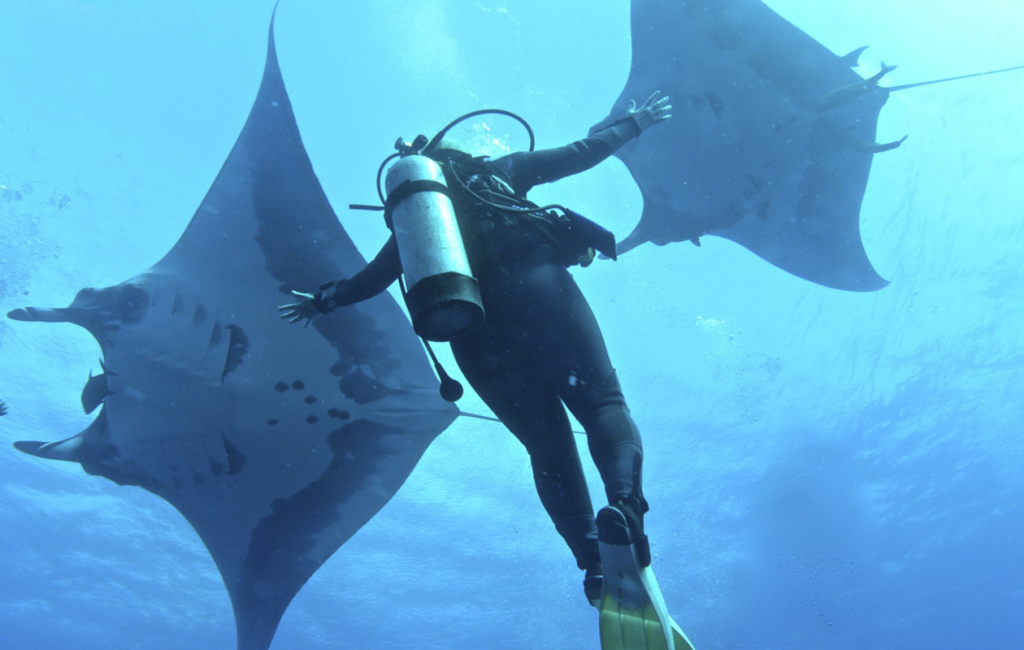
If you want to know more about the marine life, specifically on Caño Island, you can review this article:
5 sea animals at Caño Island hat you would love to see
If you would like more information about the Caño Island Diving Tour or any other Costa Rica Dive and Surf tour, please send us a message here or write to us on Whatsapp, using the green icon.
Summary
Giant manta rays are fascinating creatures that still hold many secrets.
Despite their large size and their presence in the oceans, studying them remains a challenge, since they cannot live in captivity and travel long distances in their migrations.
Each encounter with them gives us the opportunity to get to know them better and understand their importance in the marine ecosystem. Protecting them and promoting responsible tourism is key so that future generations can continue admiring these majestic giants in their natural habitat.

